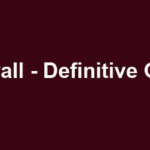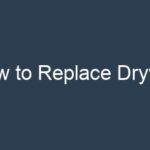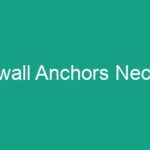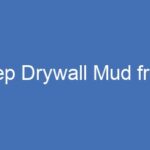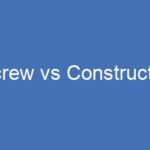Discover the availability of greenboard water resistant drywall, offering protection against high moisture and humidity while remaining as easy to install as regular drywall.
For areas in your home requiring extra moisture protection, consider green board. While not waterproof, it’s moisture-resistant and an excellent choice for your next drywall project.
Understanding Greenboard Drywall
Greenboard is a drywall product featuring a gypsum core, enclosed in green paper on one side.
Initially used in the 1960s as a tile backer in water-exposed areas, such as showers and bathtubs, it still serves various applications today.
So, what sets greenboard apart from regular drywall? The key distinction lies in its green paper exterior, coated with wax for superior moisture resistance.
Properties of Greenboard
Similar to traditional drywall, green board comprises a gypsum core with a thicker paper exterior, making it a more robust gypsum board.
This exterior is treated with water-resistant wax and tinted seafoam green, giving it the name “green board.”
Water-Resistant, not Waterproof
Despite its thicker paper coating and wax finish, green board isn’t intended for direct exposure to the elements.
While it was once used as a ceramic tile backer for shower walls, this practice ceased in the 1990s. Nevertheless, green board offers significantly greater water resistance than regular drywall.
| Tip
Is water resistant and waterproof the same?
No, water-resistant and waterproof are not the same.
Water-resistant items have a certain level of protection from exposure to water. They can usually withstand water to some degree but only for a short period or up to a minimal pressure. For example, a water-resistant watch can withstand splashes of water or rain without being damaged.
Waterproof items, on the other hand, offer a much higher level of protection. They are designed to be impermeable to water, meaning no water can enter or pass through the material, even when submerged for extended periods. Waterproof materials are often used in products that are meant to be used underwater or in wet environments, like diving watches or rain gear.
It’s important to note that even with waterproof items, the degree of protection can vary. Many products come with a rating that indicates the depth and duration they can withstand water pressure without leaking. For example, waterproof ratings are often indicated by terms like “IP67” or “IP68”, where the numbers represent the product’s level of protection against water and dust entry.
Thicker than Regular Drywall
Standard drywall comes in sizes from ¼” to ½”, while green board is available in ½” or ⅝” sheets, owing to the additional water-resistant paper treatment.
When replacing regular drywall with green board, account for the added thickness to avoid protruding panels.
Not Fireproof
Despite its ⅝” thickness, green board drywall cannot substitute for ⅝” flame-retardant drywall. For fire ratings, ensure you use “Type X” drywall.
In commercial spaces and other properties with strict codes, thick, fire-resistant drywall is required, so always choose “Type X” for these applications.
If you need ⅝” fire-resistant materials for kitchens or around fireplaces, consider alternatives like Type X drywall or cement board.
Mold Resistant?
Considering its history in humid or wet areas, it’s natural to question green board’s mold resistance. While the gypsum core inhibits mold growth, the paper exterior is susceptible to mold.
The wax finish makes green board moisture-resistant but not entirely mold-resistant. Mold-resistant agents can be applied to the facing, but paperless drywall is gradually replacing green board for enhanced mold resistance.



Where to Use (and not Use)
As water-resistant drywall, green board suits areas prone to moisture. However, avoid direct water contact in certain places.
Greenboard Go’s
Green board benefits areas with higher humidity or moisture content, such as showers, kitchens, basements, and other wet spaces in your home.
Standard drywall can suffer from higher humidity, but green board handles it well due to its water-resistant finish.
Greenboard No-Go’s
Avoid using green board in places where direct water contact is likely, such as shower stalls, saunas, steam rooms, and tile-backed bathrooms. These environments increase the risk of saturation and structural damage.
Know Where Greenboard is Going
When applying green board to ceilings, follow specific guidelines for fastening, ensuring screws or nails are spaced closer than for standard drywall. Always consult local building codes for proper wallboard selection.
Drywall Tape on Greenboard?
Apply drywall tape to joints and inside corners of green board, just like standard drywall. Moisture-resistant drywall tape is available for this purpose.
Coat drywall screws with mud, and use corner beads on outside corners. ASTM C1396 defines water-resistant gypsum backing board, which can be used as a base for ceramic or plastic tiles on walls and ceilings.
However, specific details are limited in the standard, leading to common questions about green board use.
Greenboard on Ceilings?
Many building inspectors advise against using green board on bathroom ceilings due to frequent moisture accumulation. If used, secure sheets to joists every 12 inches and apply a moisture-resistant paint finish.
Do I Really Have to Avoid Greenboard for Wet Applications?
While some inspectors discourage it, green board can be used in wet applications like shower areas or tub surrounds, following weight restrictions set by codes. However, be cautious of water damage, weaker structure, and mold issues.
What to Use Other than Greenboard?
Cement Board
Cement board, also known as durock or HardieBacker, is a typical tile backer for showers and tub surrounds. It handles water exposure well and serves as a sturdy tile-laying platform.
However, it’s expensive, heavy, and may require a moisture barrier, making it more challenging to install than green board.
Find an Alternative to Cement Board if Possible
Many opt for green board in wet areas due to its ease of use. It operates like standard drywall, is cost-effective, and simple to install. Nonetheless, proper wet areas require cement board or similar products.
Purple Board
An excellent alternative to green board is Purple Board from National Gypsum. It’s fire-resistant, mold, mildew, and moisture-resistant, with GreenGuard Gold certification for improved indoor air quality.
Purple Board offers a hi-impact option, reinforced with fiberglass mesh. It’s suitable for laundry rooms, shower surrounds, indoor pools, and other high-humidity areas.
Paperless Drywall
Another alternative to green board is paperless drywall, which features a gypsum core wrapped in fiberglass instead of paper. It offers better mold and water resistance than green board.
Despite its advantages, paperless drywall is a newer product with its own set of pros and cons.
Know Your Drywall Options
While paperless drywall provides better mold resistance and surface strength than paper-covered alternatives, it’s costlier and may be challenging to find in some areas.
Installers may find the rigid fiberglass covering more difficult to work with, particularly when sinking screws into the wall panel.
Tips for Installing Greenboard
Like standard drywall, green board can be measured and cut with a straight edge and utility knife. Score the paper along a straight edge and snap the drywall for placement.
Install greenboard with the green paper facing out, securing it with screws at regular intervals into studs and joists. Use shorter intervals for ceiling installations to prevent sagging.
Finish greenboard like standard drywall, taping screws and seams and applying joint compound before painting with a durable, moisture-resistant finish.
tag: # Greenboard, Water Resistant Drywall



